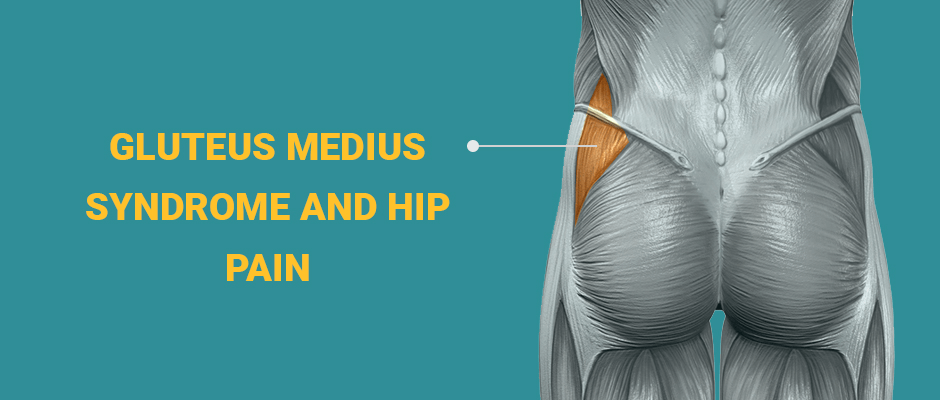
Pain in the hip and gluteal region can arise from many causes, and dysfunction in one muscle can trigger a cascade of problems in neighboring structures. Gluteus medius dysfunction and/or tendinopathy – sometimes called greater trochanteric hip pain – are frequently the culprits behind hip, pelvic and low back pain.
Gluteus medius syndrome often occurs in sedentary people who sit for most of the day, without adequate exercise to engage and challenge the gluteal hip extensors. Gluteus medius ruptures and tendinopathies often occur in athletes who play high-impact sports.
Gluteus medius physical therapy helps to reactivate sleepy glutes and restore balanced muscle tension in structures surrounding the hip. However, in moderate to severe cases of gluteus medius tendinopathy, physical therapy may not be enough. Many high-evidence studies suggest that focal shockwave therapy is an effective treatment for resolving tendinopathy and restoring gluteus medius function.
Related Materials: Hamstring strains and hamstring tendonitis rehab

The gluteus medius is a large fan-shaped muscle at the back of the hip. The architecture of its muscle fibers runs perpendicular to the ilium of the pelvis, giving the muscle its capacity to generate high forces. The gluteus medius spans along the crest of the ilium and narrows as it approaches its insertion at the side of the greater trochanter of the femur.
The gluteus medius works together with the gluteus maximus, the largest muscle in the human body, to extend the hip. It also serves to abduct the leg and rotate the hip inward. The gluteus medius muscle plays an important role in pelvic stability.
Gluteus medius pain and dysfunction occurs in both physically active and sedentary individuals, although the underlying causes are polar opposites.
Causes of gluteus medius dysfunction include:
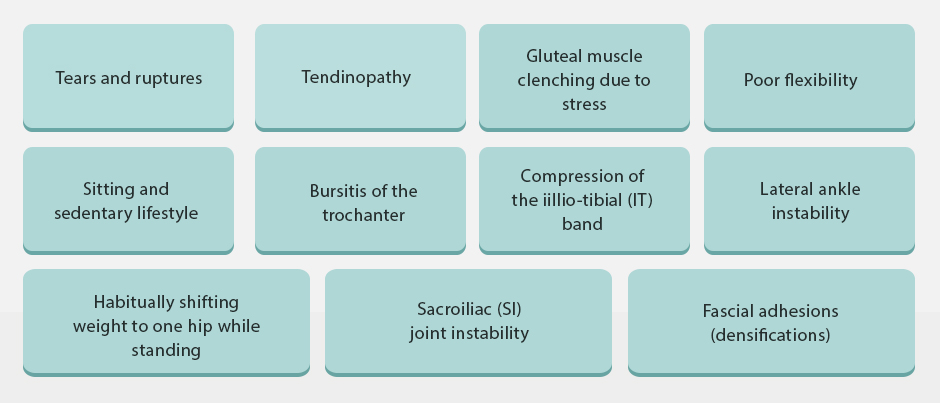
Gluteus medius muscle tears and ruptures are often seen in high-impact athletes and runners. Athletes in sports such as basketball, rugby, soccer and tennis are at high risk, as are professional ballet dancers. Sudden bursts of activity combined with tight gluteal muscles are often the core cause of gluteal ruptures. Tears of the gluteus medius can lead to trochanteric bursitis, an inflammation of the bursa sac that cushions the bone over the greater trochanter, causing side hip pain.
Sedentary people who spend long hours sitting are at risk of a condition called gluteal amnesia, aka “dead butt syndrome.” Sitting causes the gluteal muscles and tendons to elongate and weaken. At the same time. excessive sitting also causes the hip flexors at the front of the pelvis to shorten and become tight. Tight hip flexors can cause the pelvis to tilt forward, compressing the vertebrae of the lower back and causing back pain.
Gluteal amnesia is a type of tendinopathy where signals from the motor neurons that activate the gluteal muscle complex are insufficient to innervate the muscle fibers of the gluteus medius, forcing the hamstrings and low back muscles to compensate. In essence, the gluteus medius muscle “forgets” how to forcefully contract.
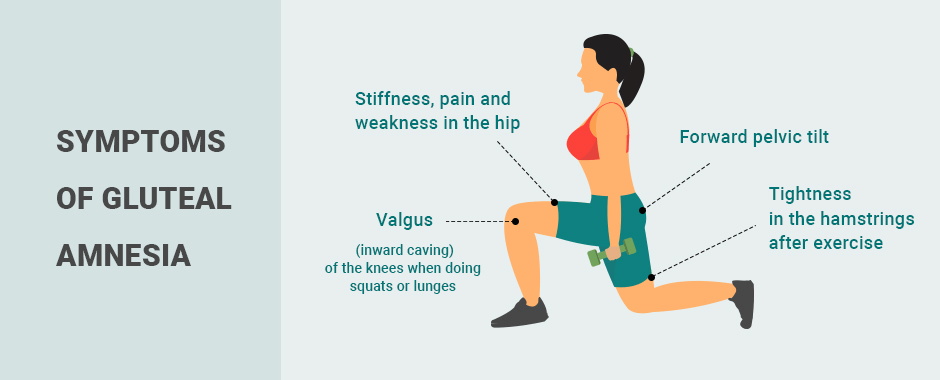
Symptoms of gluteal amnesia include:
Compensation by the lower back and hamstring muscles to offset gluteal amnesia can cause injuries to the lumbar spine, hips, knees and ankles. Physical therapists often include glute exercises when rehabilitating lower back pain and lower extremity injuries.

A 2020 study used ultrasound imaging to compare gluteus medius muscle activation in 27 subjects with patellofemoral pain syndrome (PFPS), aka runner’s knee, to activation patterns of a control group with no knee pain. Results showed that the patellofemoral pain syndrome group had a significantly larger gluteus medius activation imbalance between the right and left sides compared to the control group. The imbalance in the PFPS group was strongly correlated with knee pain scores.
Another study done in 2020 looked at the hips of 2452 patients undergoing hip arthroscopy for femoroacetabular impingement, where the tranchanter of the femur does not glide smoothly in the socket of the acetabulum. They found that 10.7% of the patients had gluteus medius tendinopathy.
Because the structures of the body are highly interdependent, it is not enough to simply treat the locus of pain. It is critical to look for compensation patterns in other areas of the body and treat them as well, to restore total body synergy.
In addition to reviewing your health history and symptoms, and conducting a physical exam, we use advanced technologies to diagnose and treat gluteus medius pain and dysfunction:
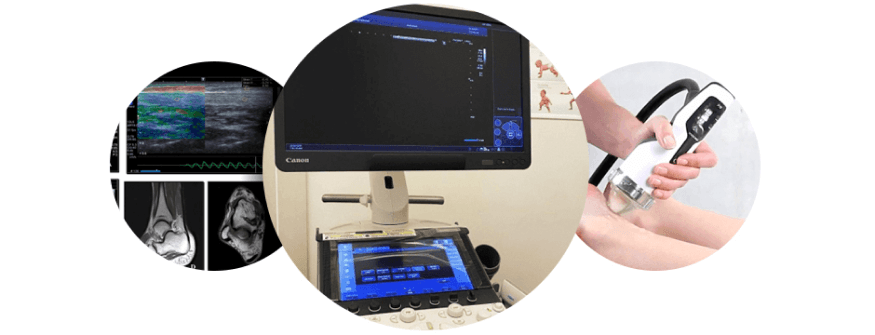
Gluteus medius physical therapy works to restore balanced muscle tension and optimal joint alignment in the hip and pelvic region, and throughout the lower kinetic chain. At NYDNRehab, your gluteus medius rehabilitation program may include:
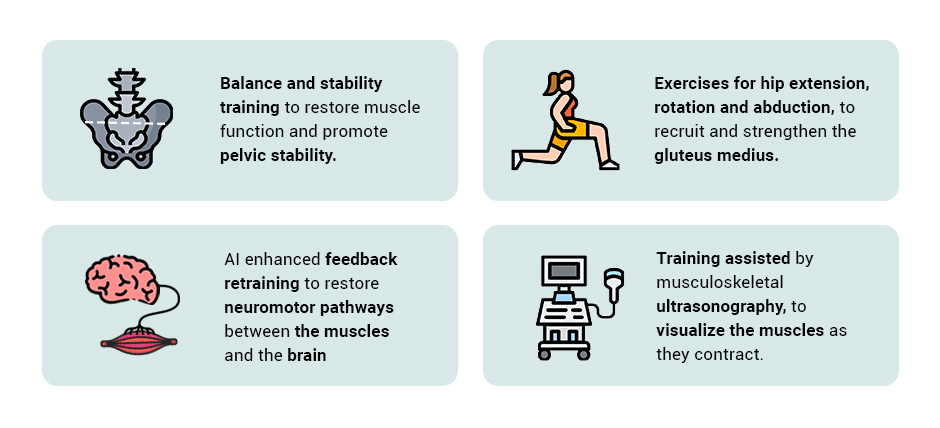
In addition to treating your gluteus medius, we will look for compensation patterns that impact your hamstrings, back, hips, knees and ankles, to ensure that balance is restored throughout your body.
To restore optimal activation of the gluteal muscle complex, try these 5 classic exercises. Prior to adding load, practice correct execution with just body weight or light resistance, to reduce your risk of injury.

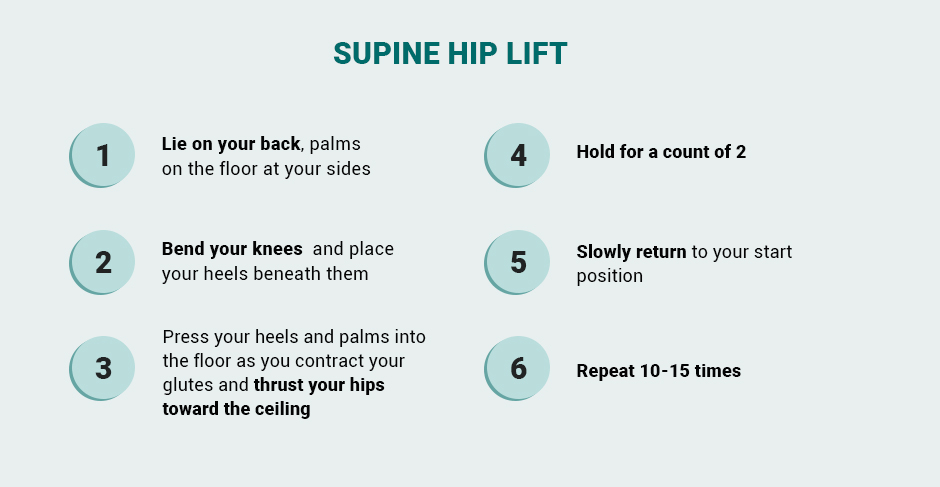
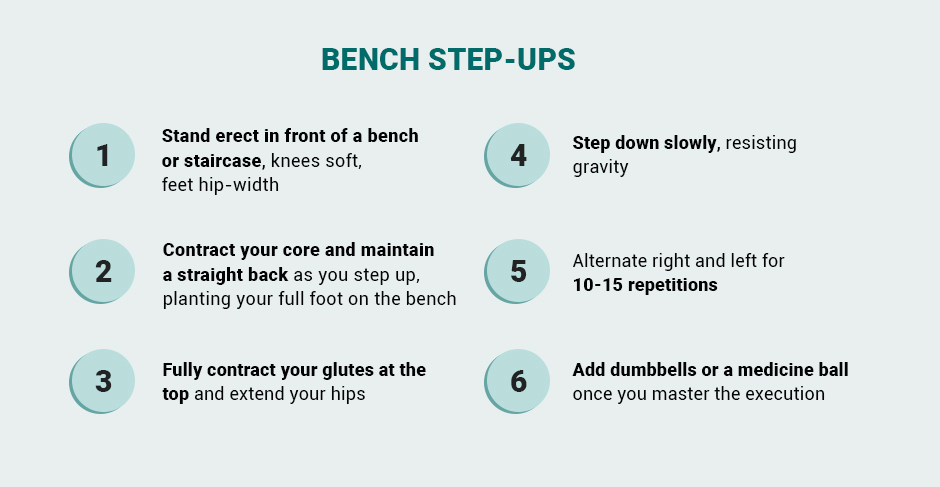

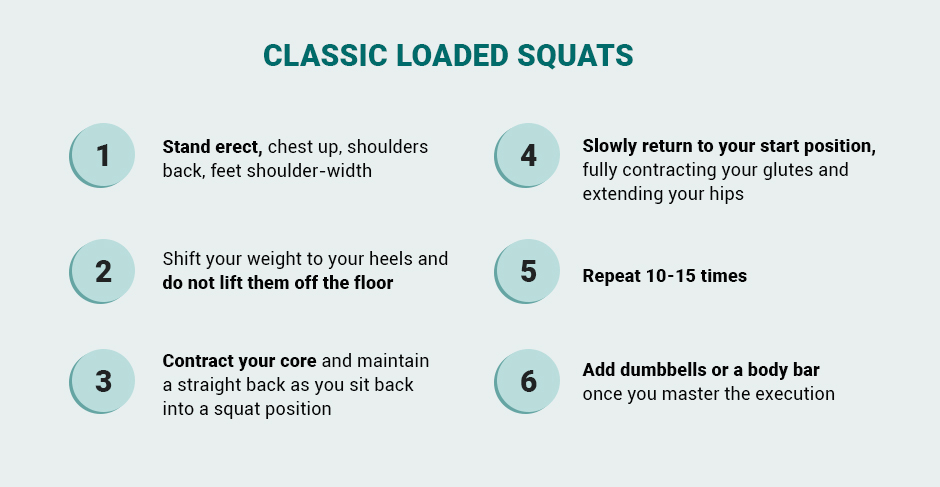
Your body was designed to move freely, without pain or dysfunction. The majority of pain syndromes, including gluteal tendinopathy and gluteal tears and ruptures, can be resolved with conservative care. Dr. Lev Kalika has devoted his life’s work to finding the most effective ways to diagnose, treat and resolve musculoskeletal pain and dysfunction. His expertise in diagnostic ultrasonography coupled with years of experience as a tendon specialist make NYDNRehab the clinic of choice for gluteus medius syndrome and hip pain.
If you are suffering from hip or glute pain, contact NYDNRehab today, and get back to fluid pain-free movement.
Resource
Carlisi, Ettore, et al. “Focused extracorporeal shock wave therapy for greater trochanteric pain syndrome with gluteal tendinopathy: a randomized controlled trial.” Clinical Rehabilitation 33.4 (2019): 670-680.
Gilpin, Morgan M., et al. “EMG Analysis of Neural Activation Patterns of the Gluteal Muscle Complex.” International Journal of Exercise Science: Conference Proceedings. Vol. 2. No. 12. 2020.
Payne, Karlie, Justin Payne, and Theresa A. Larkin. “Patellofemoral pain syndrome and pain severity is associated with asymmetry of gluteus medius muscle activation measured via ultrasound.” American journal of physical medicine & rehabilitation 99.7 (2020): 595-601.
Meghpara, Mitchell B., et al. “Prevalence of Gluteus Medius Pathology on Magnetic Resonance Imaging in Patients Undergoing Hip Arthroscopy for Femoroacetabular Impingement: Asymptomatic Tears Are Rare, Whereas Tendinosis Is Common.” The American Journal of Sports Medicine 48.12 (2020): 2933-2938.
Dr. Lev Kalika is a world-recognized expert in musculoskeletal medicine. with 20+ years of clinical experience in diagnostic musculoskeletal ultrasonography, rehabilitative sports medicine and conservative orthopedics. In addition to operating his clinical practice in Manhattan, he regularly publishes peer-reviewed research on ultrasound-guided therapies and procedures. He serves as a peer reviewer for Springer Nature.
Dr. Kalika is an esteemed member of multiple professional organizations, including: